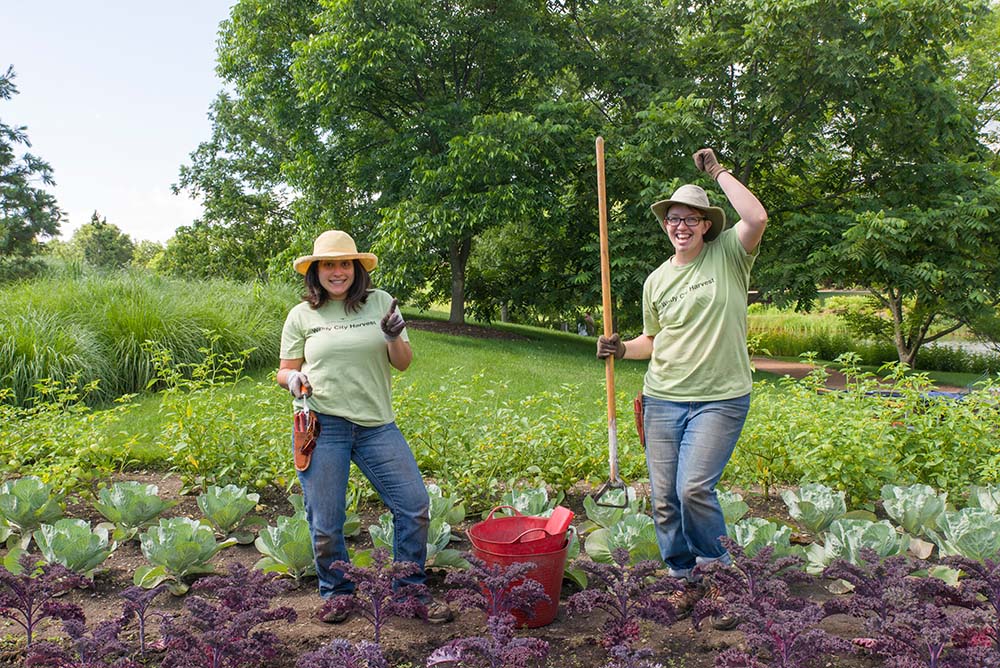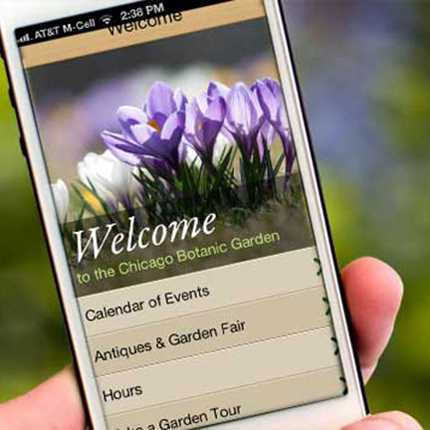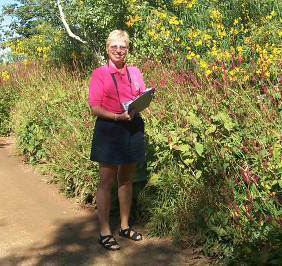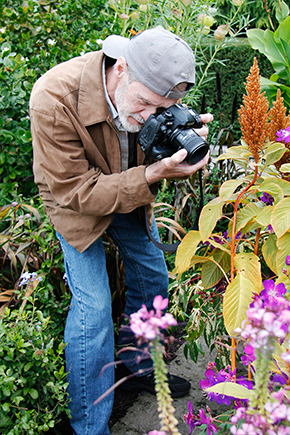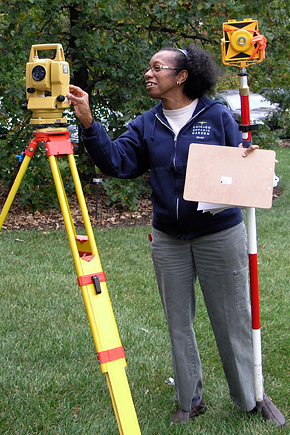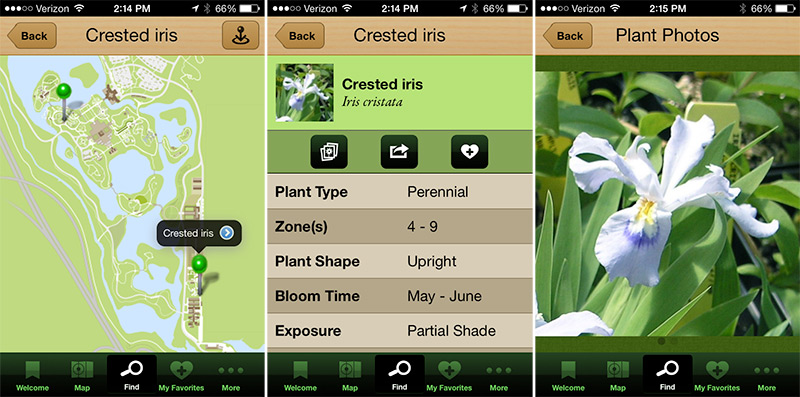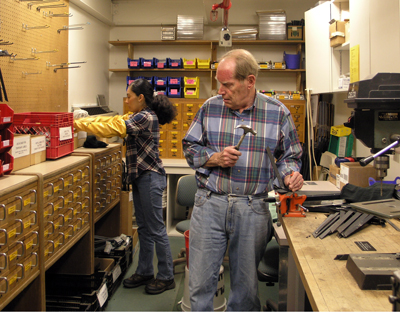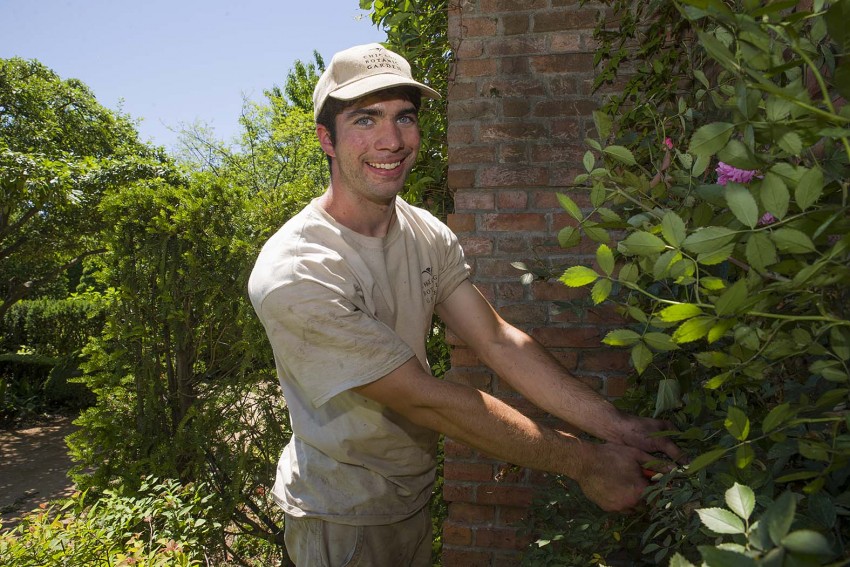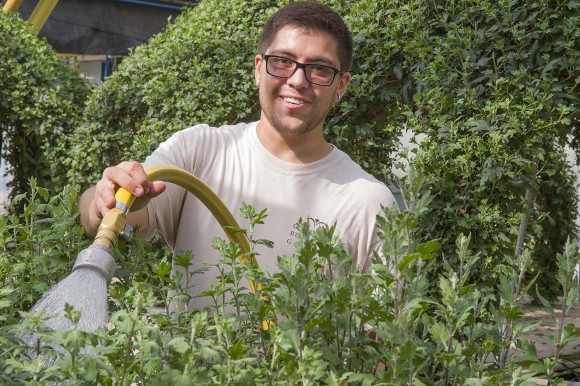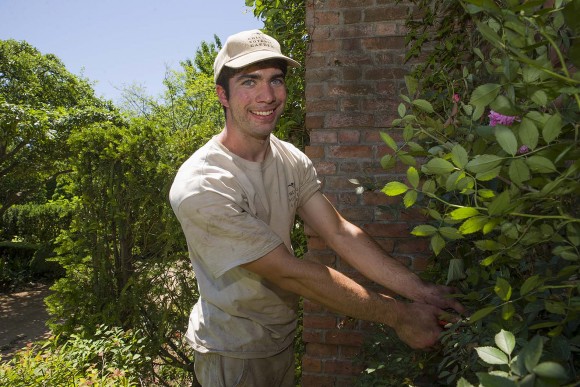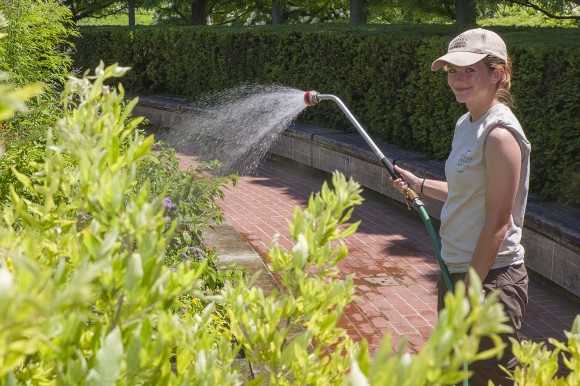A summer spent at the Regenstein Fruit & Vegetable Garden is full of little joys and big surprises.
Interning at Windy City Harvest, we (Lesley and Rachel) started our time with grand plans to become farmers, urban agriculture pioneers, business owners, and horticulturists. We thought a summer at the parent organization—the Chicago Botanic Garden—learning about a vast collection of fruit and vegetable plant varieties would be a good way to jump-start our careers in the field.
But the weather and the Garden had a much different education for us in mind.
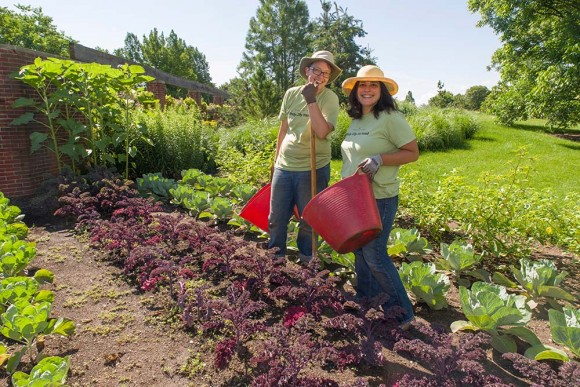
The summer’s weather has been very cool and wet: this is not ideal for some of the fruiting crops that most people prize. Cucumbers and squash are everywhere and right on schedule, but the bright red, heavy tomatoes we love to harvest this time of year are taking a bit longer to ripen in the cooler weather. And yet, the cooler weather has brought visitors to the Garden in friendly droves. These visitors (avid gardeners, young children, families, and globetrotters) have encouraged us to keep the garden in good shape throughout the season, and shared their own sense of wonder about fruits and vegetables.
Although the Chicago Botanic Garden has a separate garden—the Grunsfeld Children’s Growing Garden—dedicated to working with children, many families bring their children to visit the Fruit & Vegetable Garden while they are here because of the broad range of fruit and vegetables we have on display. They can also learn about bees or growing watermelons. They may even spot toads here and there, if they have a quick eye.
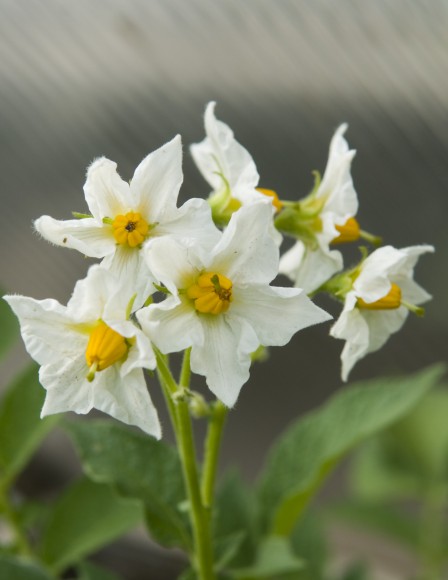
Both of us have enjoyed showing children how carrots and potatoes grow, since those plants, specifically, look very different when they are growing than when they are on a plate. Getting the chance to talk to children about food and farming has affirmed our commitment to the work that lies ahead. Sharing our knowledge about growing healthy, sustainable food is one of the most important skills that we can develop as future farmers.
One warm July day, a group of 7- and 8-year-olds walked into the garden, where we happened to be cultivating “the three sisters” (corn, beans, and squash). They stopped in their tracks, entranced by the long ears of corn. “Do you know where popcorn comes from?” Rachel asked. The curious kids looked at one another, shrugged, and all eyes turned to the apprentice farmer. She asked the children to look around and spot the plant that might be responsible for the delicious snack. Suddenly, it dawned on a few of them, and they jumped and pointed, “It’s the corn! It’s the corn!” The corn plants took on a new significance when we were able to put them into context.
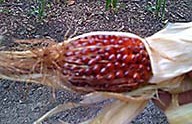
The diversity of plant life in the Fruit & Vegetable Garden attracts some of the most inquisitive, passionate, and skilled gardeners from around the globe. Patrons are constantly asking us questions about plant varieties, weather patterns, soil amendments, and why our eggplants don’t look like their eggplants. They want to know what cardoons taste like, or where we sell the gigantic Zephyr squash.
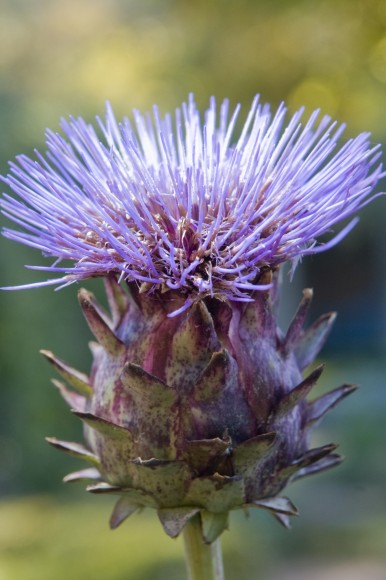
On a particularly lovely early morning, a couple from England pulled us aside and shared what they’ve been growing in their allotment garden across the pond. They were inspired by the fruits and vegetables they saw in the garden and wanted to share and compare notes about their own bounty at home.
“Have you ever made beetroot chutney?” they inquired. We looked at each other and shook our heads, but we wanted to know more. We had never heard of the recipe but were certainly intrigued by the sound of it. The couple explained that it was a savory dish consisting of sautéed beets, onions, herbs, and vinegar—lovely as a condiment or side dish. We were both inspired to call beets “beetroot” and make beetroot chutney after that conversation.
Herein lies one of the greatest gifts of our internship: we have been able to learn from experts, share knowledge with visitors, and get a lot of hands-on experience. We thought we might have a difficult time adjusting to the early morning hours and manual labor, but the joy we have experienced has definitely made it worthwhile. Our paths have crossed with so many interesting and amazing people—all in the name of fruits and vegetables.
Both of us are former educators who value the gifts of teaching and learning. Our previous classrooms had four walls that bound us to a specific space. We continue to teach and to learn. But our classroom looks a little different—no walls, open space, tons of possibilities—the Garden.
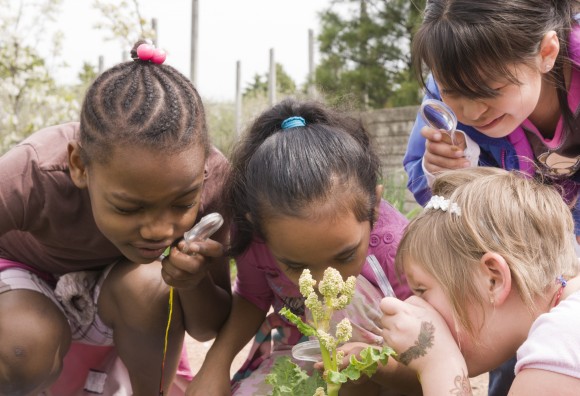
These experiences are not only for Windy City Harvest interns. Hop on your bike, take a walk, and plan a visit to the Chicago Botanic Garden or your local farm and talk to your gardener!
Lesley Grill
Rachel Schipull
©2014 Chicago Botanic Garden and my.chicagobotanic.org

